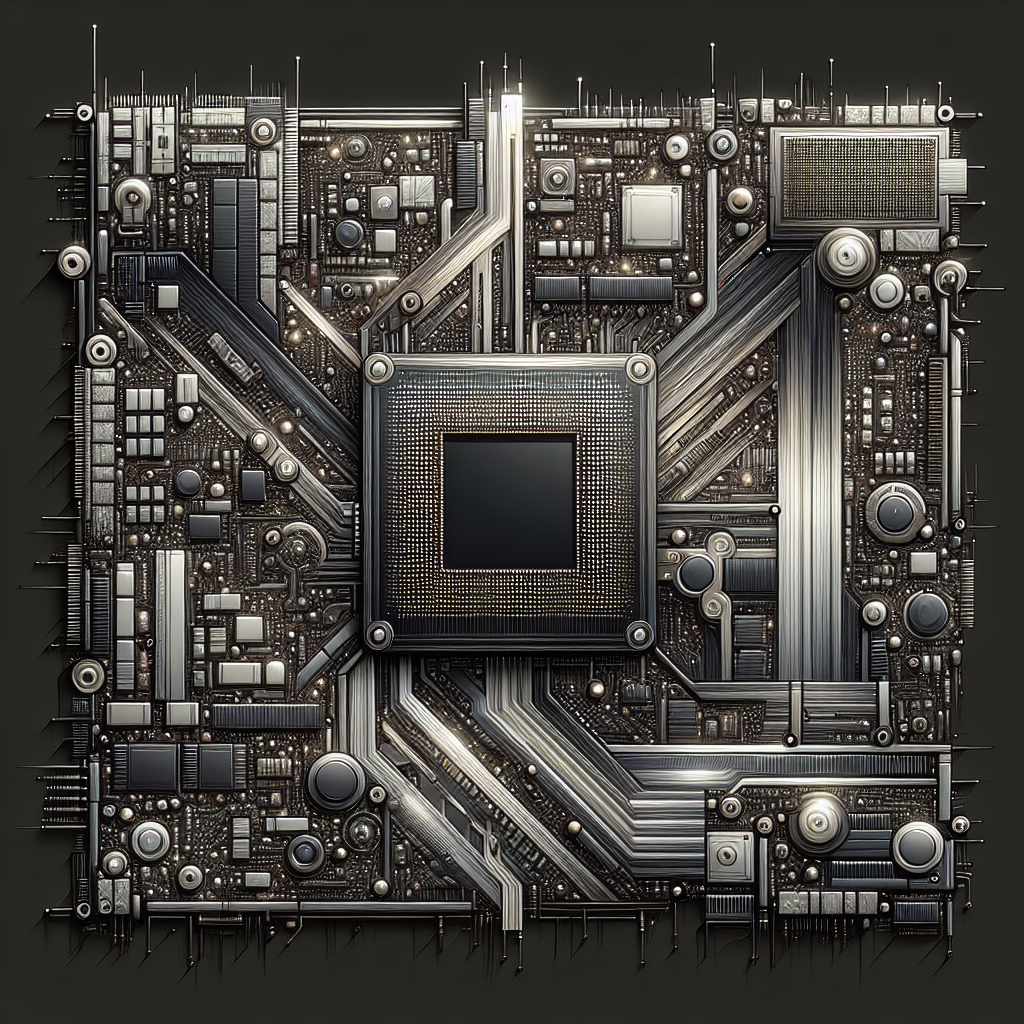Navigating the Turbulent Seas of Tech: A Deep Dive into the Hardware Ecosystem
The tech industry is dynamic, with its ever-evolving hardware landscape presenting a kaleidoscope of opportunities and challenges. Today, let's embark on a thoughtful expedition through the intricate web of gaming hardware, AI demand, and the challenges of tech giants, inspired by the insights from a "Broken Silicon" podcast episode. We'll explore the nuances of market dynamics, consumer expectations, and the potential trajectories of leading companies in this sector.
The Struggle for Superior Silicon
In the realm of gaming graphics, the tussle between expectation and reality has never been more pronounced. Recent launches in the GPU market, notably by AMD with their RDNA 3 series, have been a mixed bag of triumphs and tribulations. It's a narrative that's all too common: products tantalizingly oversold by marketing hype, only to reality check buyers with underwhelming performance. Our case in point is the disappointing fruition of the much-anticipated RDNA 3 graphics cards—products that promised a new echelon of performance but fell short, not only in technical prowess but also in synchronicity with their software.
The Marketing Mirage versus User Experience
A 20% gap between expectation and actual performance is not just a number—it's a breach of trust in consumer-company relationships. The situation with RDNA 3's actual muscle flexing less than advertised is reminiscent of a classic case of the marketing team writing checks the engineering team can't cash. This discordance is not just an AMD affliction—Intel and Nvidia share their own chapters in the annals of overpromise and underdeliver. It raises questions not about the capability of these technological mammoths but about their strategy and execution.
The AI Gold Rush and Its Repercussions
The tech giants' pivot towards AI may be likened to a 21st-century gold rush. Nvidia's laser focus on AI profitability has forged a paradigm where consumer GPUs play second fiddle to enterprise AI demands. This strategic shift has significant implications for the average gamer and enthusiast. As AI's siren call lures away much of the high-end silicon, questions arise about potential GPU shortages and inflated prices, threatening to burst what some are calling a bubble reminiscent of the crypto craze.
Understanding the Radeon Value Proposition
Despite the cacophony of market forces, AMD's Radeon series stands as a testament to the company's commitment to offering value. The Radeon RX 6600, for instance, shines as an inexpensive yet formidable option for gamers on a budget. It's a compelling narrative of balancing price and performance, yet AMD is often its own undoing with lackluster driver support that can tarnish the user experience and brand loyalty.
Intel's Arc: More Fizzle Than Spark
Switching gears to Intel's Arc GPUs, we witness a different kind of struggle. Intel CPUs and Arc GPUs should, in theory, harmonize like a symphony. Yet, the dissonance is startling—a cacophony of compatibility issues and performance oddities that sour the melody. Intel’s venture into the discrete GPU market with its Arc series has been overshadowed by teething problems, from vertical screen tearing to driver woes. This venture stands as an example of ambition clashing with execution, making one wonder if their promise of graphical prowess is but a mirage.
Roadmaps and Reality: The Case of Ryzen 7000
Diving into CPU territory, AMD's roadmap for their Ryzen 7000 series paints a picture of innovation and performance gains. However, the real-world translation of these advances sometimes speaks a different language—a more modest improvement in IPC (Instructions Per Cycle) than the ambitious claims suggest. This discrepancy between aspirational roadmaps and tangible enhancements is a recurrent theme that plagues the tech industry.
Relevance and Resale: The Nvidia Paradigm
Nvidia's approach offers a masterclass in brand resilience and market dominance. Despite the introduction of GPUs that are met with lukewarm reception, their flagship products continue to command attention and, more importantly, sales. Nvidia understands the critical role of resale value and legacy support, offering a compelling reason for consumers to invest in their ecosystem.
The Software Symphony: AMD's Unfinished Composition
In an era where hardware performance has begun to plateau, software has emerged as the true stage for differentiation. AMD's success hinges on refining its software suite, from boosting the efficacy of FSR (FidelityFX Super Resolution) to ensuring driver stability. The company's potential for capturing market share is vast, provided it can execute a software strategy as compelling as its hardware offerings.
The Future Awaits: Rdna A4 on the Horizon
As we cast our gaze towards the future, whispers of AMD's upcoming RDNA A4 spark curiosity. It's a narrative of potential redemption for AMD, offering high-end performance at mid-range pricing. If the tech giant has learned from its missteps and aligns its formidable hardware with flawless software, the next chapter in its saga could be groundbreaking.
In conclusion, the high seas of the tech industry are fraught with strong currents and unpredictable weather. As we continue to navigate these waters, one truth remains steadfast: the fine balance between innovation, marketing, and execution is the compass that will guide industry leaders towards success or shipwreck. As the journey unfolds, only time will tell who will adapt and who will be left adrift in the relentless pursuit of technological supremacy.
Related News
- Riding the Silicon Roller Coaster: A Whirlwind Recap of Tech in 2023 and Look Ahead to 2024
- Unraveling the Conundrums of Modern Gaming Hardware: A Dive into 'Broken Silicon'
- The Intriguing State of Silicon: AMD and Intel's Ongoing Dance
- The Evolving Landscape of GPU Technology: A Zesty Take on Recent Developments
- Navigating the Turbulent Waters of Modern GPU Markets and Driver Dilemmas
